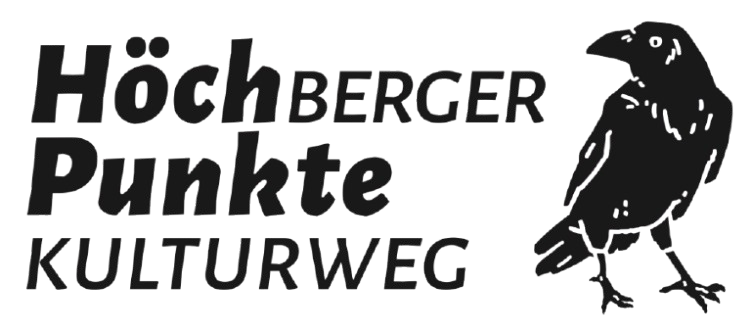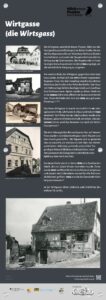Wirtgasse (the Wirtsgass)
Wirtgasse, below this square, leads uphill from today’s Hauptstraße to Kister Straße. It was the through road from Würzburg in the direction of Tauberbischofsheim and thus, the main thoroughfare until the beginning of the 20th century. The main road, as we know it today, was only built in 1902 to avoid the considerable gradient.
At the lower end of Wirtgasse, opposite the Lamm inn, was the so-called Rügamer house, built in 1711. Before the canal was built, it stood as a beautiful end to the street in the centre of the village. The house with its courtyard gate was the counterpart to the Zum Lamm inn. Later, a public bathing establishment was operated on this site until the 1950s. Today there is a new medical centre, built in 1984.1, 2 , 3
The house at Wirtgasse 12 was probably built in the 16th or 17th century at the latest and was last extended in 1850. A bakery, later with a wine bar, was operated from the middle of the 19th century. Since the 1970s, the property has only been used as a residential building.4
The three life-size bronze figures on this square were created by the artist couple Uschi Maurer and Kurt Ewald. The figures are designed in such a way that it looks as if they are talking about the weather. While ‘es Herrle and es Fräle’ look questioningly at the sky and debate, the Läushämml takes the opportunity to steal an apple from Fräle’s basket.
A playing card factory operated by Jakob Wiesen stood on this site in 1880. This was converted into a bakery by Peter Berberich in 1927 an was then running as a bakery by the Brückner family for many decades. The municipality of Höchberg acquired the property in 1984. 5
Jewish an Christian residents were living at that time next door to each other in Wirtgasse.

